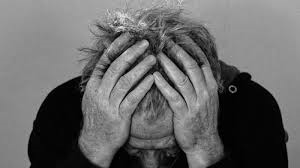Safeguarding themes
 This page considers the different types and patterns of abuse and neglect. It is not intended to be an exhaustive list, but an illustrative guide which could give rise to a safeguarding concern.
This page considers the different types and patterns of abuse and neglect. It is not intended to be an exhaustive list, but an illustrative guide which could give rise to a safeguarding concern.
If you are unsure whether a person’s situation may require a formal safeguarding concern to be raised, please refer to the Threshold of Needs Matrix for guidance.
Financial or Material abuse
Includes; theft, fraud, internet scamming, coercion in relation to an adult’s financial affairs or arrangements, including in connection with wills, property, inheritance or financial transactions, or the misuse or misappropriation of property, possessions or benefits.
Possible indicators:
- change in living conditions;
- lack of heating, clothing or food;
- inability to pay bills/unexplained shortage of money;
- unexplained withdrawals from an account;
- unexplained loss/misplacement of financial documents;
- the recent addition of authorised signers on a client or donor’s signature card; or
- sudden or unexpected changes in a will or other financial documents.
Sexual abuse/exploitation
Includes; rape, indecent exposure, sexual harassment, inappropriate looking or touching, sexual teasing or innuendo, sexual photography, subjection to pornography or witnessing sexual acts, indecent exposure and sexual assault or sexual acts to which the adult has not consented or was pressured into consenting.
Any sexual relationship that develops between adults where one is in a position of trust, power or authority in relation to the other (e.g. day centre worker/social worker/residential worker/health worker etc.) may also constitute sexual abuse (see Allegations against staff and volunteers).
Possible indicators
- Adult has urinary tract infections, vaginal infections or sexually transmitted diseases that are not otherwise explained;
- Adult appears unusually subdued, withdrawn or has poor concentration;
- Adult exhibits significant changes in sexual behaviour or outlook;
- Adult experiences pain, itching or bleeding in the genital/anal area;
- Adult’s underclothing is torn, stained or bloody;
- A woman who lacks the mental capacity to consent to sexual intercourse becomes pregnant;
- Sexual exploitation.
Domestic Abuse/Violence
Includes; psychological, physical, sexual, financial, emotional abuse, ‘honour’ based violence, Female Genital Mutilation, forced marriage, coercive control, harassment and stalking, online abuse.
Domestic abuse is any incident or pattern of incidents of controlling, coercive or threatening, degrading behaviour, violence or abuse… by someone who is or has been an intimate partner or family member regardless of gender or sexuality, towards a person aged 16 or over.
Many people think that domestic abuse is about intimate partners, but it is clear that other family members are included and that much safeguarding work (that meets the criteria set out in Section 42 of the Care Act 2014) that occurs at home is, in fact is concerned with domestic abuse. This confirms that domestic abuse approaches and legislation can be considered safeguarding responses in appropriate cases.
Possible indicators:
- Low self-esteem
- Feeling that the abuse is their fault when it is not
- Physical evidence of violence such as bruising, cuts, broken bones
- Verbal abuse and humiliation in front of others
- Fear of outside intervention
- Damage to home or property
- Isolation – not seeing friends and family
- Limited access to money
Physical
Includes; assault, hitting, slapping, pushing, kicking, misuse of medication, being locked in a room, inappropriate sanctions or force-feeding, inappropriate methods of restraint, and unlawfully depriving a person of their liberty.
Possible indicators:
- No explanation for injuries or inconsistency with the account of what happened
- Injuries are inconsistent with the person’s lifestyle
- Bruising, cuts, welts, burns and/or marks on the body or loss of hair in clumps
- Frequent injuries
- Unexplained falls
- Subdued or changed behaviour in the presence of a particular person
- Signs of malnutrition
- Failure to seek medical treatment or frequent changes of GP
Self-neglect
Includes; neglecting to care for one’s personal hygiene, health or surroundings and includes behaviour such as hoarding. It is also defined as the inability (intentional or unintentional) to maintain a socially and culturally accepted standard of self-care, with the potential for serious consequences to the health and wellbeing of the individual and sometimes to their community.
Possible indicators:
- Very poor personal hygiene
- Unkempt appearance
- Lack of essential food, clothing or shelter
- Malnutrition and/or dehydration
- Living in squalid or unsanitary conditions
- Neglecting household maintenance
- Hoarding
- Collecting a large number of animals in inappropriate conditions
- Non-compliance with health or care services
- Inability or unwillingness to take medication or treat illness or injury
Neglect and Acts of Omission
Includes; ignoring medical, emotional or physical care needs, failure to provide access to appropriate health, social care or educational services, and the withholding of the necessities of life such as medication, adequate nutrition and heating. Neglect also includes a failure to intervene in situations that are dangerous to the person concerned or to others, particularly when the person lacks the mental capacity to assess risk for themselves.
Neglect and poor professional practice may take the form of isolated incidents or pervasive ill treatment and gross misconduct. Neglect of this type may happen within a adult’s own home or in an institution. Repeated instances of poor care may be an indication of more serious problems. Neglect can be intentional or unintentional.
Possible indicators:
- Poor environment – dirty or unhygienic
- Poor physical condition and/or personal hygiene
- Pressure sores or ulcers
- Malnutrition or unexplained weight loss
- Untreated injuries and medical problems
- Inconsistent or reluctant contact with medical and social care organisations
- Accumulation of untaken medication
- Uncharacteristic failure to engage in social interaction
- Inappropriate or inadequate clothing
Modern Slavery
Includes; slavery, human trafficking, forced and compulsory labour and domestic servitude. Traffickers and slave masters use whatever means they have at their disposal to coerce, deceive and force individuals into a life of abuse, servitude and inhumane treatment.
A large number of active organised crime groups are involved in modern slavery. But it is also committed by individual opportunistic perpetrators.
There are many different characteristics that distinguish slavery from other human rights violations, however only one needs to be present for slavery to exist.
Possible indicators:
- Signs of physical or emotional abuse
- Appearing to be malnourished, unkempt or withdrawn
- Isolation from the community, seeming under the control or influence of others
- Living in dirty, cramped or overcrowded accommodation and or living and working at the same address
- Lack of personal effects or identification documents
- Always wearing the same clothes
- Avoidance of eye contact, appearing frightened or hesitant to talk to strangers
- Fear of law enforcers
Discriminatory
Includes; unequal treatment based on age, disability, gender reassignment, marriage and civil partnership, pregnancy and maternity, race, religion and belief, sex or sexual orientation (known as ‘protected characteristics’ under the Equality Act 2010), verbal abuse, deorgatory remarks or inappropriate use of language related to a protected characteristic.
Hate crime can be viewed as a form of discriminatory abuse, although will often involve other types of abuse as well. It also includes not responding to dietary needs and not providing appropriate spiritual support. Excluding a person from activities on the basis they are ‘not liked’ is also discriminatory abuse.
Possible indicators:
Indicators for discriminatory abuse may not always be obvious and may also be linked to acts of physical abuse and assault, sexual abuse and assault, financial abuse, neglect, psychological abuse and harassment, so all the indicators listed above may apply to discriminatory abuse.
- An adult may reject their own cultural background and/or racial origin or other personal beliefs, sexual practices or lifestyle choices.
- Appearing withdrawn and isolated.
- Making complaints about a service not meeting their needs.
Organisational
Including neglect and poor care practice within an institution or specific care setting such as a hospital or care home, or where care is provided within a person’s own home. This may range from one off incidents to on-going ill-treatment. It can be through neglect or poor professional practice as a result of the structure, policies, processes and practices within an organisation. Such abuse violates the person’s dignity and represents a lack of respect for their human rights.
Possible indicators:
- Lack of flexibility and choice for people using the service
- Inadequate staffing levels
- People being hungry or dehydrated
- Poor standards of care
- Lack of personal clothing and possessions and communal use of personal items
- Lack of adequate procedures
- Poor record-keeping and missing documents
- Absence of visitors
- Few social, recreational and educational activities
- Public discussion of personal matters
- Unnecessary exposure during bathing or using the toilet
- Absence of individual care plans
- Lack of management overview and support
